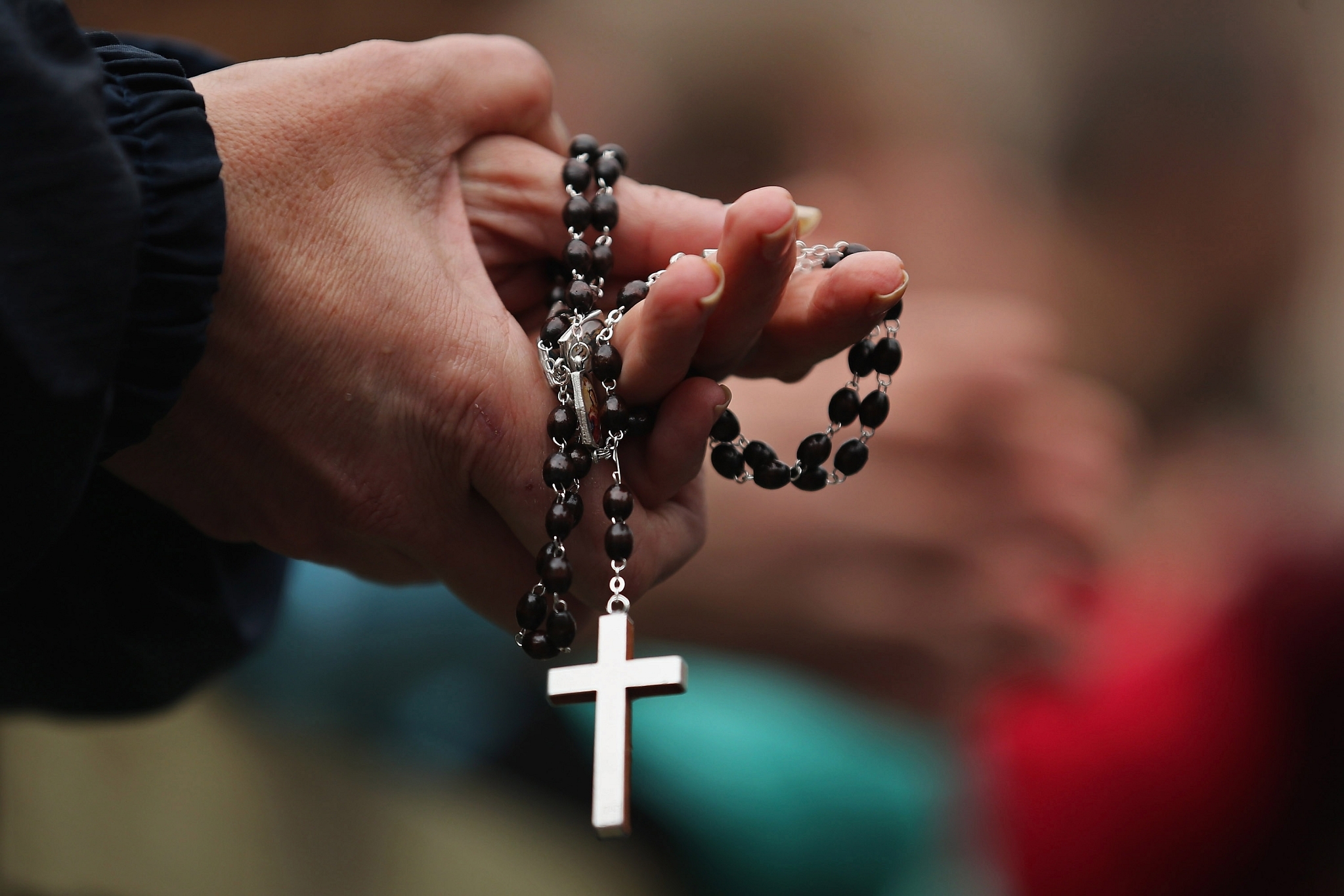Politics
Why Crypto-Christians May Be Keeping Tamil Nadu’s Numbers Below Actual Levels
- The actual Christian population of Tamil Nadu today is roughly 12 per cent of the state’s population, or 9.45 million people.
- This is twice the official reported percentage of 6 per cent. How did we arrive at this number?

Woman holding a Christian cross. (Dan Kitwood/Getty Images)
The 2011 Census of India said Christians in Tamil Nadu officially numbered 44 lakh.
However, if one were to go by the large numbers of Christian religious edifices and the dominance of Christians in media, Tamil cinema, and the government machinery, one suspects that this number must be higher.
To independently arrive at an estimate of practising Christians, we took the following approach: research various Christian denominations and gather statistics on the adherents as reported by the churches themselves.
Organised Denominations
The organised denominations — Roman Catholic and the Church of South India show a total of 73.4 lakh Christians — which is roughly 9.3 per cent of Tamil Nadu’s population in 2020.
The data for Seventh Day Adventists shows 327 churches for a total Adventist population of 92,716, ie, one church for 283 registered members.
Independent Ministries
There are other denominations — Pentecostal, Tamil Evangelical Lutheran, Baptist, Methodist — that do not collect and share data as rigorously. However, informal information is shared here for the Tamil Evangelical Lutheran Church that is reported to have 1.68 lakh adherents in 57 congregations.
Extent Of Crypto-Christianity
There is a common perception that a large number of Tamils are crypto-Christians. Let us examine this claim in the light of some facts:
- Tamil Nadu had 48.45 per cent of its people living in urban regions in 2011 and, by some accounts, it is on track to be 67 per cent urbanised by 2030.
- In urban situations, caste and religion are important only from the point of view of reservations and marriage.
- After conversion, people lose Scheduled Caste status, but are included in the Backward Classes list.
- Conversion does not remove people from Backward or Most Backward lists in the Tamil Nadu state government lists and preserves their Backward Class status in the Central OBC list as well.
- Congregations are often segregated by caste and marriage bureaus function in order that matches can be made within the same caste.
Given the above, one can guess that crypto-converts are to be found among Scheduled Caste (SC) communities.
The overall Scheduled Caste population of Tamil Nadu is less than 20 per cent. We have assumed here that only members of SC communities may have tangible reasons to keep their Christian faith hidden.
However, we do recognise that many other individuals across communities may keep their Christian identities hidden, for intangible social reasons.
The data we have been able to gather does not include various Protestant denominations — Baptist, Pentecostal, Methodist — which do not have centralised control. Many of the tele-evangelists that are so prominent in public perception are actually preaching to a flock that is registered with a CSI church.
A factor one has to keep in mind is that the organic population growth rate of Christians in Tamil Nadu is among the lowest. Kanyakumari district — with a 46.8 per cent Christian population has recorded a TFR of 1.5. This trend would be true of other districts such as Thoothukudi, Tirunelveli and Nilgiris, as well.
Given these facts above, we would estimate that the actual Christian population of Tamil Nadu today is roughly 12 per cent of the state’s population, or 9.45 million people. This is twice the official reported percentage of 6 per cent. How did we arrive at this number?
The large, established congregations have themselves declared a total of 7.5 million congregants. This is roughly 9 per cent of the 2020 Tamil Nadu population estimate. We guess that another third of this number may be congregants at the smaller, less formal churches.
Notes:
For relative percentages of population, we have used the numbers from the 2011 Census of India. For gross numbers, we have taken recourse to unofficial estimates of population for 2020.
For raw data and sources, see annexure (below).
Support Swarajya's 50 Ground Reports Project & Sponsor A Story
Every general election Swarajya does a 50 ground reports project.
Aimed only at serious readers and those who appreciate the nuances of political undercurrents, the project provides a sense of India's electoral landscape. As you know, these reports are produced after considerable investment of travel, time and effort on the ground.
This time too we've kicked off the project in style and have covered over 30 constituencies already. If you're someone who appreciates such work and have enjoyed our coverage please consider sponsoring a ground report for just Rs 2999 to Rs 19,999 - it goes a long way in helping us produce more quality reportage.
You can also back this project by becoming a subscriber for as little as Rs 999 - so do click on this links and choose a plan that suits you and back us.
Click below to contribute.
Latest